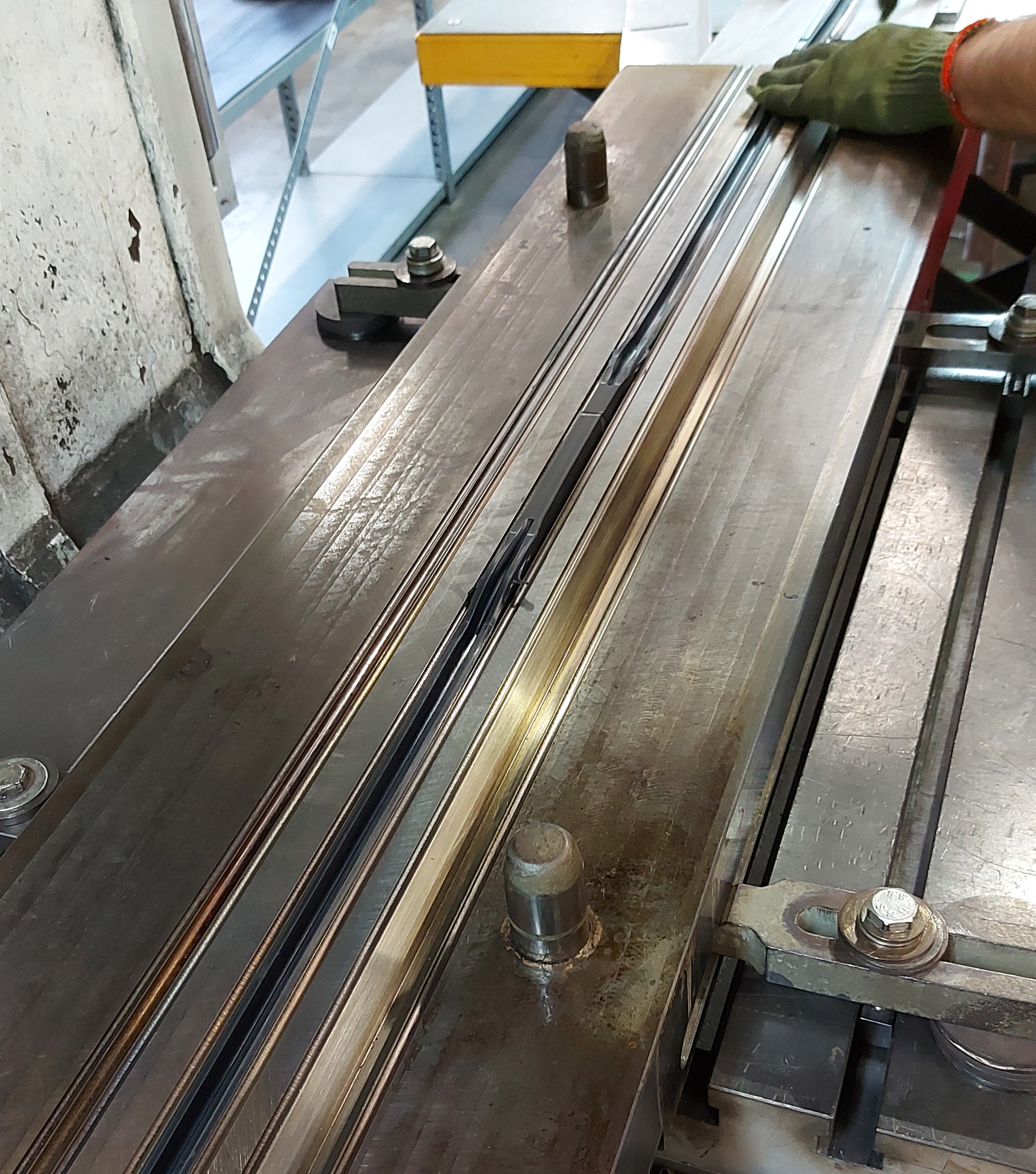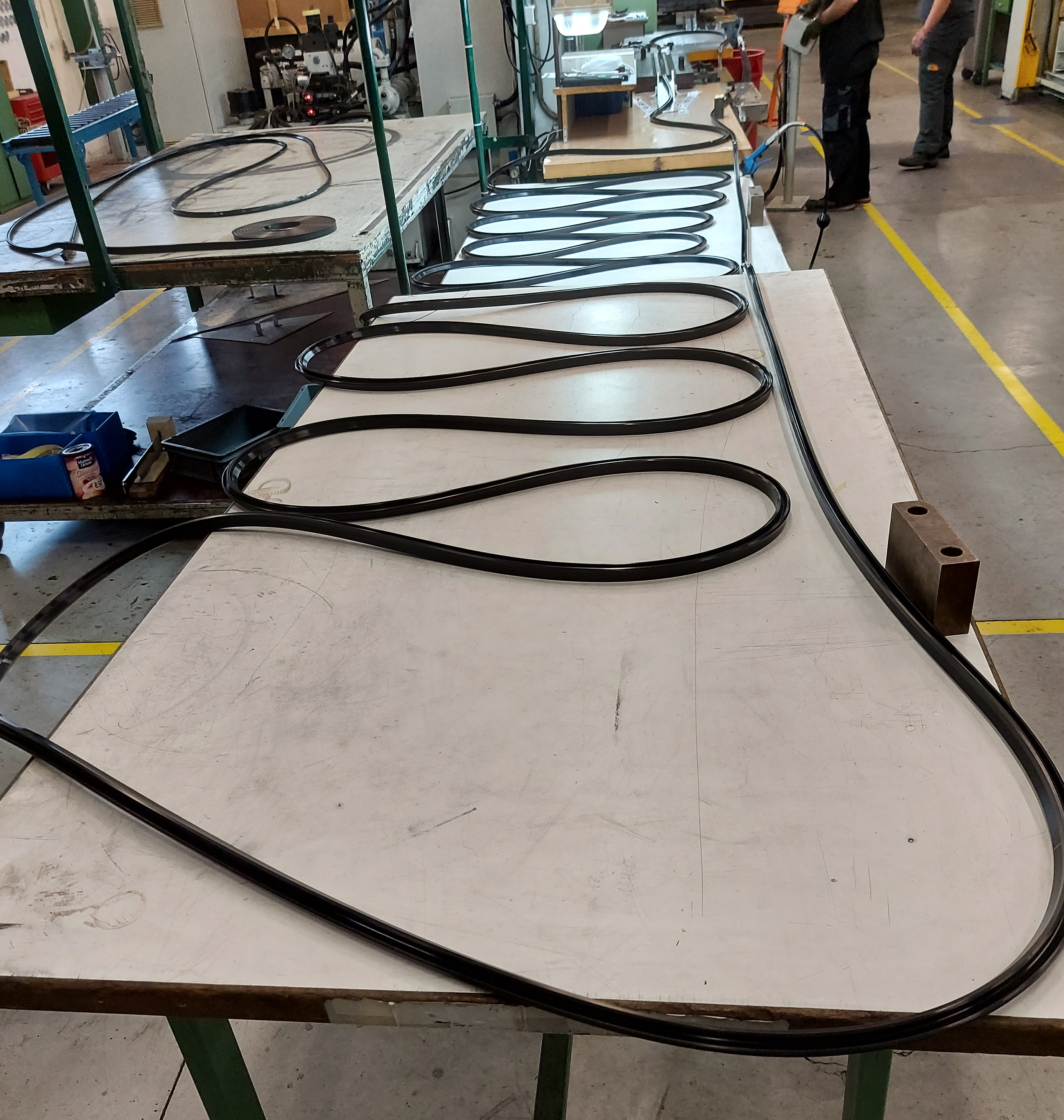ALL NEWS :
Moulded or extruded seals: make the right choice!
06/03/2023
You may be aware of the difference in manufacturing between moulded and an extruded seals.
But do you know the consequences of your choice when replacing a seal on site? And do you know what the differences are in terms of their uniformity and tolerance?
Don't take any risks when choosing seals for your application! In this article, PXL SEALS provides elements for a better understanding of how to choose between a moulded or extruded seal.
When should I choose a moulded seal?
When the stakes are high, because the cost of the unplanned replacement of a seal is enormous, because the consequences of lost production are huge compared to the cost of the seal... For these reasons, when the stakes are high, PXL SEALS strongly recommends fitting fully moulded seals, without bonds.
Indeed, many strategic applications related to the hydroelectric, wind and tidal power sectors, but also more generally to large bearings / slewing rings require this type of seal.
What is a fully moulded seal and why choose it?
Definition of a moulded seal
The monoblock moulded seal has the same physico-chemical and dimensional characteristics throughout its circumference, meaning that it does not have any cold bonding (usually cyano glue) causing hard spots, nor hot bonding with material addition, a process traditionally called "vulcanisation”.
Both types of joining have a lower breaking strength than the fully moulded product, and often pose a risk of misalignment of the sealing areas.
When replacing a seal, it is still possible to consider a monoblock moulded solution, even in the case of on-site replacement without complete disassembly of the equipment. In that case, the PXL SEALS team uses the patented MD Way method to create the bond and obtain a fully moulded seal similar to a new one.
Benefits of the moulded seal
Increased precision and strength
Our moulding process, whether done in our workshop or on-site, allows us to produce parts with high dimensional uniformity and tight tolerances (compliant with ISO 3302-1 M2-3 standard). This process requires the creation of cavities with dimensions matching those of the parts to be produced in moulds which are then subjected to the pressures and temperatures required for the vulcanisation process.
Since the material is trapped in the mould during the entire vulcanisation process, its behaviour is reproducible over the entire circumference of the mould and with each moulding.
The ability to manufacture very large diameter seals
Thanks to the process implemented in its manufacturing workshop, PXL SEALS can produce monoblock seals with diameters ranging from a few centimetres to several metres (no limit in the process).
Of course, it is still possible to make hot bondings (HLB process) or cold bondings on moulded seals, when the presence of a bond is not a problem and the failure of the seal does not entail major issues. In this case, however, the dimensional uniformity of the moulding process is retained.
Extruded seal: advantages and limitations
An elastomer seal can also be produced by extrusion. Many markets use this type of seal.
Unlike moulded seals, extruded seals are less uniform and have wider manufacturing tolerances (ISO 3302-1 E2-3).
The extruded material undergoes swelling on leaving the extruder, which is the cause of the dimensional disparities that can be observed. These seals require the use of an extrusion die, which is less bulky and therefore less expensive than the moulds, and the vulcanisation is carried out in a second stage.
In order to obtain a seal of the required dimensions, it must be cold or hot glued and therefore presents the risks listed above.
Sometimes unavoidable in the energy industries, because the shapes of the structures do not allow for the production of moulded parts, this process allows for the rapid production of large lengths and is widely used in hydromechanical solutions.
In conclusion, moulded or extruded seals: what to choose?
Moulded seals are more uniform and precise in terms of tolerances than extruded seals. In addition, thanks to the patented MD Way® site-moulded joint technology, you can have a fully moulded seal, even when replacing an old one!
For applications where sealing is critical, we strongly recommend the use of moulded seals for both original equipment and retrofits.




CATEGORIES
TAGS
ARCHIVES | Janvier | |||||
| Lun | Mar | Mer | Jeu | Ven | Sam | Dim |
| 1 | 2 | 3 | 4 | |||
| 5 | 6 | 7 | 8 | 9 | 10 | 11 |
| 12 | 13 | 14 | 15 | 16 | 17 | 18 |
| 19 | 20 | 21 | 22 | 23 | 24 | 25 |
| 26 | 27 | 28 | 29 | 30 | 31 | |










